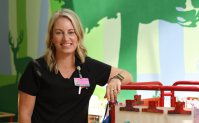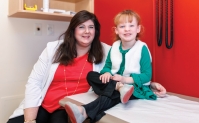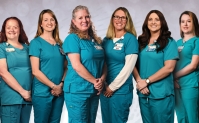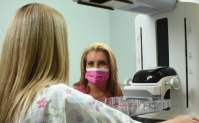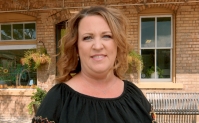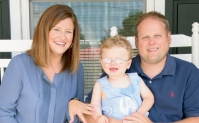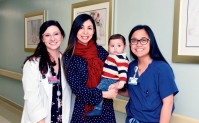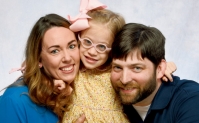You Inspire The Best in Us.
With the many advances in care and treatments, today’s patients have more and more reasons to expect the best outcomes. Here are the incredible stories of our patients and their journeys. Click on a thumbnail and scroll down to view each story.

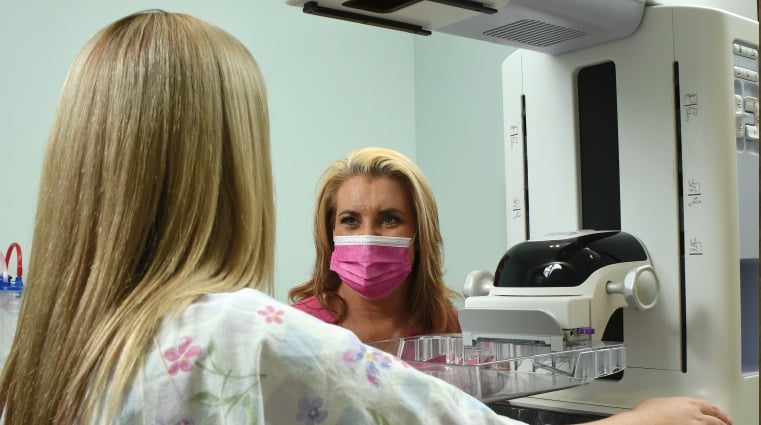
It’s Time for Your Mammogram
By Kelly Hughes
For many women the thought of missing a hair appointment causes anxiety and disappointment. Who wants to go another week without your roots colored or dead ends clipped? Should women not be equally worried about missing important and potentially life-saving screenings like an annual mammogram?
Since the beginning of the COVID-19 pandemic, disruptions have caused people to postpone annual screenings. Putting off annual screenings can lead to a delay in diagnosis.
In an editorial written by Norman E. Sharpless, Director of the National Cancer Institute, he states, “modeling the effect of COVID-19 on cancer screening and treatment for breast and colorectal cancer (which together account for about one-sixth of all cancer deaths) over the next decade suggests almost 10,000 excess deaths from breast and colorectal cancer deaths.”
These numbers are staggering on top of the anticipated deaths seen each year and further indicate the need for all women to schedule their mammogram sooner rather than later.
What is a mammogram?
A mammogram (breast tomosynthesis) is a screening tool physicians use to look for early signs of breast cancer. A mammogram is an
X-ray picture of the breast. Regular mammograms allow doctors to notice changes in breast tissue and can identify breast cancer earlier, sometimes up to three years before it can be felt.
Three-dimensional mammography has become the new standard of care for screening mammograms. A 3D mammogram combines multiple breast X-rays to create a three-dimensional picture of the breast. Studies have found that compared to traditional 2D mammograms, 3D mammograms offer fewer false positives and are more effective in women age 65 and older.
“This technology produces a three- dimensional view that allows doctors to examine breast tissue layer by layer,” said McLeod Radiologist Dr. Shawn Conwell. “So, instead of viewing all the complexities of breast tissue in a flat image, as with conventional 2D mammography, fine details are more visible and no longer hidden by the tissue above or below.
“A good analogy for 3D mammography is thinking of the pages in a book. If you look down at the cover you cannot see all the pages, but when you open it up, you can go through the entire book page by page to see everything between the covers.”
Who should be screened?
According to the American Cancer Society, women at average risk for breast cancer should begin annual screening mammograms at age 40.
Women who are at high risk for breast cancer based on certain factors should get a breast MRI and a mammogram every year, typically starting at age 30. This includes women who:
- Have a family history of breast cancer
- Have a known BRCA1 or BRCA2 gene mutation
- Have a first-degree relative with a BRCA1 or BRCA2 gene mutation, and have not had genetic testing themselves
- Had radiation therapy to the chest when they were between the ages of 10 and 30 years
- Have Li-Fraumeni syndrome, Cowden syndrome, or Bannayan-Riley-Ruvalcaba syndrome, or have first-degree relatives with one of these syndromes.
How do I schedule a mammogram at McLeod Health?
Patients can ask their primary care physician or OB/GYN to order a screening mammogram. Once that order is received a member of the Reservations and Scheduling team will call the patient to review their information and select a time and McLeod Health location convenient for them. Self-referrals are also accepted and can be made directly by the patient by calling Reservations and Scheduling at 843-777-2095 or online at McLeodMammogram.org.
Since 2010, the Affordable Care Act has required all new health insurance plans to cover screening mammograms every one to two years for women ages 40 and older, with no out-of-pocket costs.
What should I expect during a mammogram?
Patients receiving a mammogram at a McLeod Health facility will check in at registration before proceeding to the radiology department. If previous mammograms were performed at a non-McLeod Health facility, the patient is encouraged to bring a copy of those scans with them for the radiologist to review.
Comparing annual mammogram images ensures changes to breast tissue are identified.
Patients are asked to refrain from wearing deodorant or antiperspirant which can interfere with the images. The mammography technician will ask you to remove your shirt and bra and provide you with a cover to wear during the mammogram. You and the technologist are the only ones in the room during the mammogram.
All mammograms performed at McLeod Health use 3D technology.
The technician will share important information with you regarding the process and help you to feel comfortable during the exam. A variety of images will be taken to ensure the radiologist has a clear view of the breast tissue.
“Our ability to diagnose and treat breast cancer relies on early detection,” said Dr. Tasha Martin, Breast Surgeon at McLeod Breast Surgery Seacoast. “It is so important for women to get their annual screenings. Early detection is the key to more successful outcomes for women.”
The physicians and staff at the McLeod Center for Cancer Treatment and Research provide the most advanced cancer treatment options for breast cancer and a wide variety of other cancers at McLeod Regional Medical Center and McLeod Health Seacoast.
-
McLEOD REGIONAL MEDICAL CENTER FLORENCE
843-777-2000 -
McLEOD DARLINGTON
843-777-1100 -
McLEOD DILLON
843-774-4111 -
McLEOD LORIS
843-716-7000 -
McLEOD SEACOAST
843-390-8100 -
McLEOD CHERAW
843-537-7881 -
McLEOD CLARENDON
803-433-3000



-
McLEOD REGIONAL MEDICAL CENTER FLORENCE
843-777-2000 -
McLEOD DARLINGTON
843-777-1100 -
McLEOD DILLON
843-774-4111 -
McLEOD LORIS
843-716-7000 -
McLEOD SEACOAST
843-390-8100 -
McLEOD CHERAW
843-537-7881 -
McLEOD CLARENDON
803-433-3000
 Find a Doctor
Find a Doctor  Locations
Locations  Services
Services 
